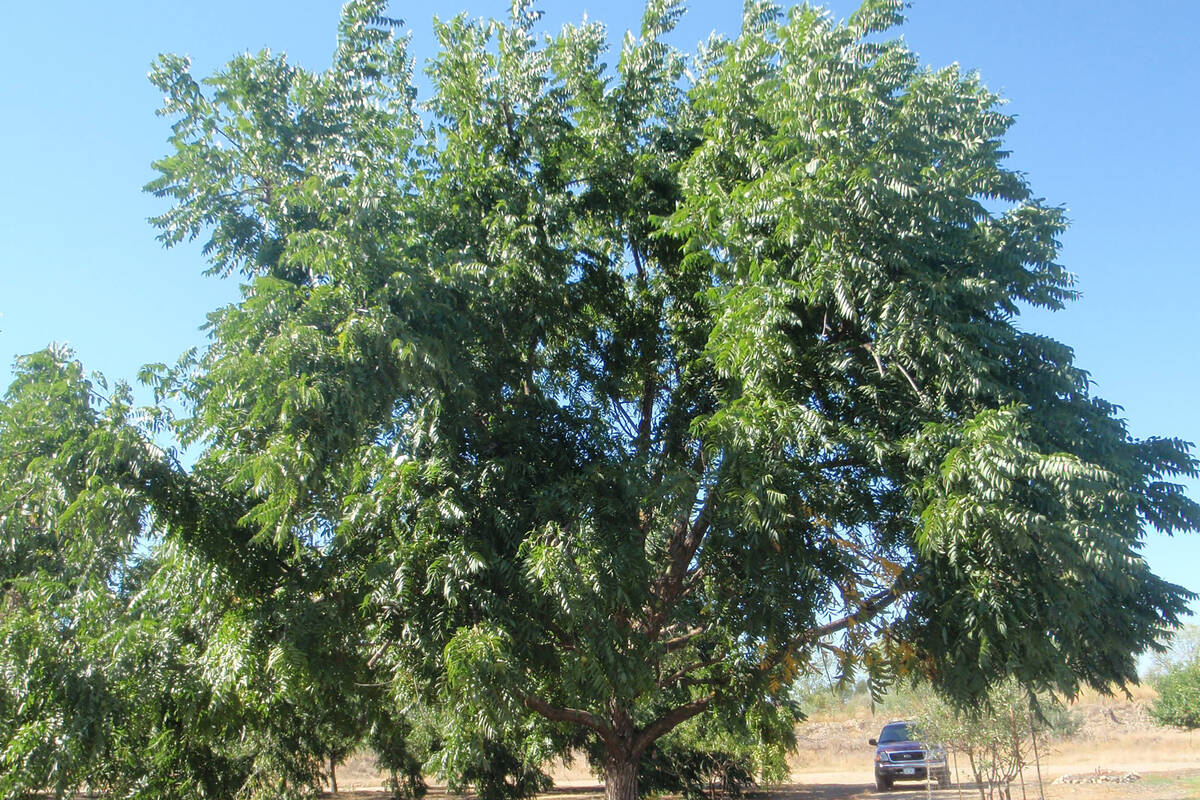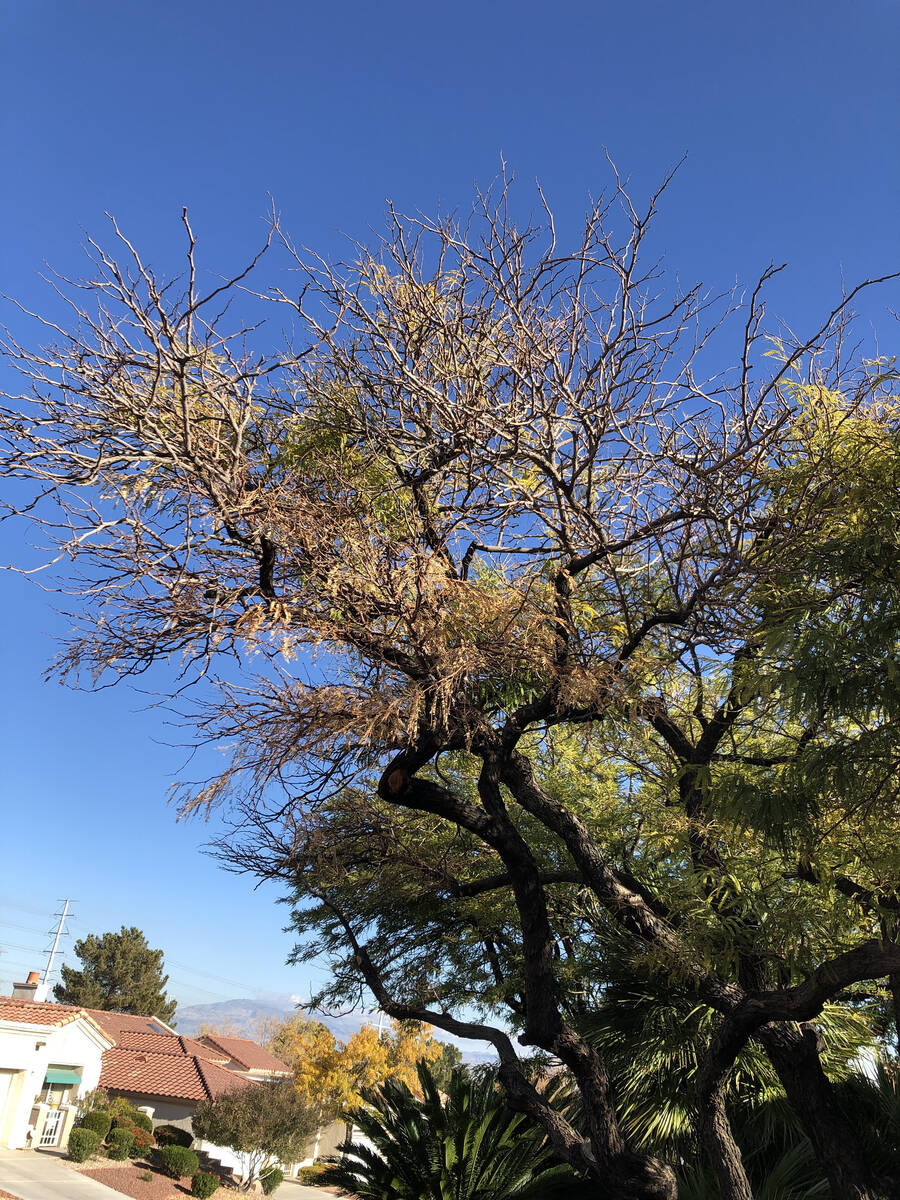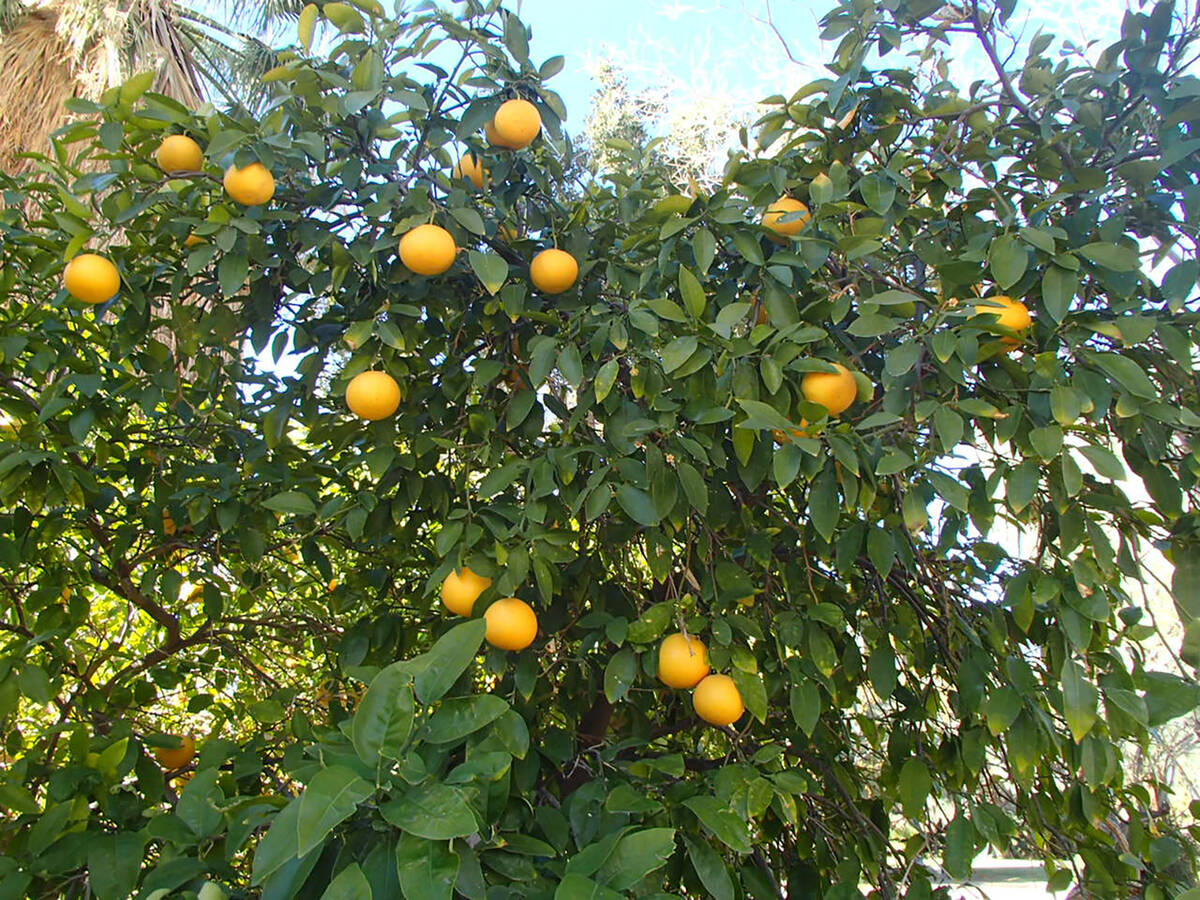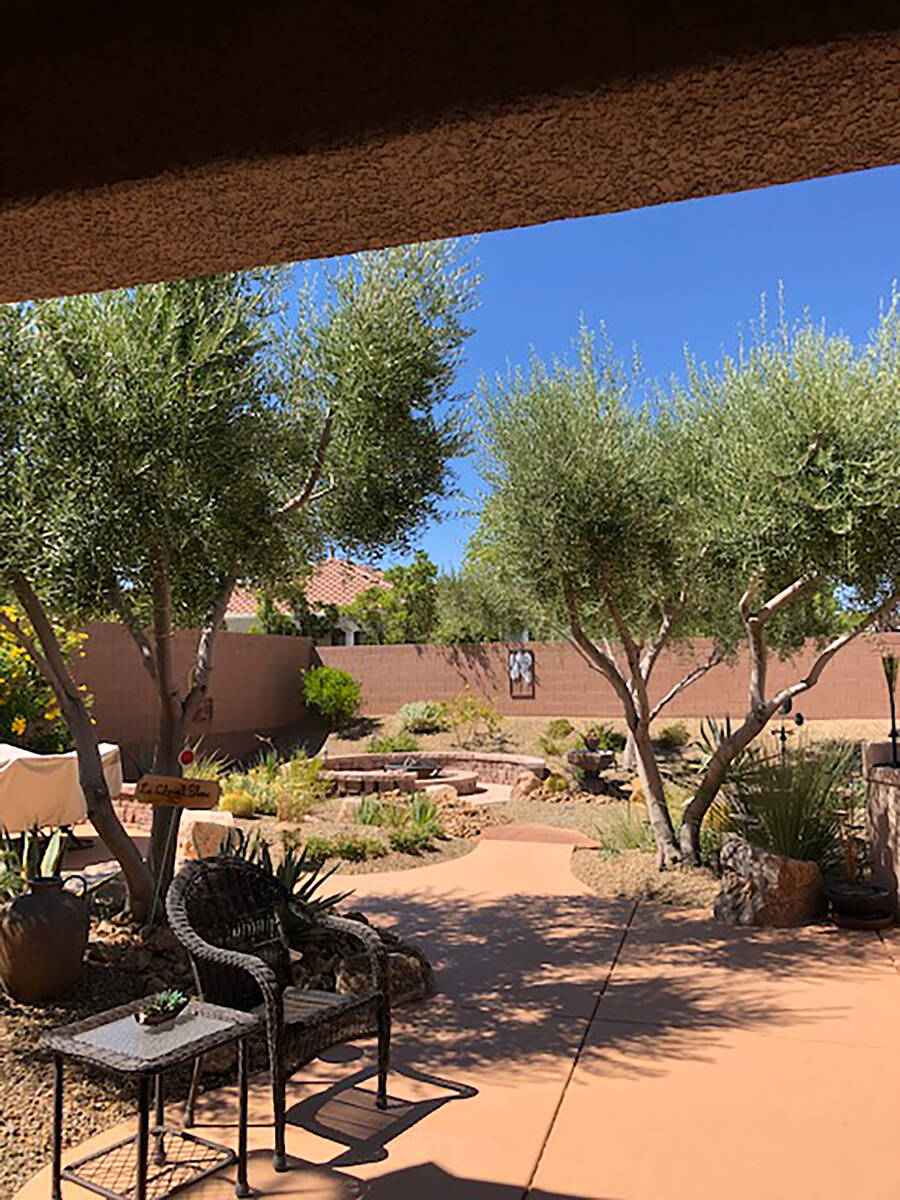Some key factors to keep in mind when selecting a tree
Q: Which should I pick for growing here: persimmon, Persian mulberry, walnut or pecan?
A: Each has its strengths and weaknesses. Of the four, the one that handles the heat the worst is persimmon. Persimmon should be grown with afternoon shade such as the east or north side of your home. You also have to do some special pruning, heading back second-year small limbs, to get it to work in the desert.
Walnut and pecan are big trees, and they require a lot of water. Of the four that you selected, pecan is the tallest at maturity, averaging 80 to 100 feet tall. Walnut is next, at about 50 to 60 feet tall. They’re probably not a good fit for most yards. Maybe you can grow one of these trees in a small yard, but you will pay dearly in water cost.
The Persian mulberry is the smallest of those three at 25 to 30 feet tall.
The biggest challenge of the last three is growing and harvesting the fruit. To harvest the fruit as low on the tree as possible, I would suggest growing the Persian mulberry as a bush rather than a tree and keeping it below 10 feet tall. Otherwise, the birds will get fruit you can’t reach.
By the way, all the purple mulberries stain cement, cars and other things left out in the open. White mulberries stain less.
Q: Is there a method to supercharge the growth of a Swan Hill olive tree? Maybe a blend of nutrients and methodical watering?
A: About the fastest growth I have seen from trees is when I grew them hydroponically, but that was in a greenhouse. That was for trees that were native to that area: three oaks and three maple trees. They had a greenhouse, access to nutrients, water and air whenever needed. The next-fastest growth was outside using a fertilizer injector. But that is the key: roots having access to nutrients, water and air whenever they were needed and being able to use them whenever they were needed.
Getting back to your Swan Hill olive tree, I would guess that giving it fertilizer and water whenever needed is the key. I would apply a fertilizer with all of the nutrients about six to eight weeks apart through their growing season. I would make sure they get water to root depth so the water is not a limiting factor. I would make sure that there is at least one day without water during summer months so that the roots have enough air.
Provide fertilizer to this tree every two months starting in mid- to late February and ending when growth is stopped or slowing in the fall, about October or early November.
Q: One of our mesquite trees is not doing well and we don’t know if it’s dying. Can you give us any suggestions?
A: When I texted you for more information, you said that their appearance started to decline in the summer. Mesquite trees are susceptible to spider mite damage, especially when the temperatures start to get hot.
There is a simple way to test for spider mites besides looking for their webbing. Take a thin branch that is discolored but still alive and slap it against a white piece of paper. Spider mites are very small and will look like a period at the end of a sentence. A trained eye can look for other things such as dust and eggs, but that is your confirmation.
My next guess is water. Mesquite trees are usually desert trees. They require water out to at least half the drip line and 18 inches deep when you apply it. The easiest way is to use a sprinkler on the end of a hose and run the water about 8 feet wide for about one to two hours. Otherwise, you have to build a berm to capture the water that you apply and force it about 18 inches deep.
Q: I have a 5- to 6-year-old dwarf Meyer lemon tree that is about 10 feet tall and just as wide. It is in the ground and gets lots of sun. It has produced many lemons over the years: last year about 200 lemons, but this year only about 50 and all of them are on one side of the tree facing north. They are all yellow now and I wonder how long I can leave them on the tree before picking them? Also, when is the best time to prune or thin the tree? The center seems to be very dense.
A: After you finish harvesting the fruit (the latest should be February) is the time to prune. Don’t remove the lower branches attached to the trunk (unless they are interfering with each other), and keep shade on the trunk as low as possible. Those branches help protect the tree from direct and damaging sunlight. Remember these are semitropical trees.
If there are branches less than 8 to 12 inches and growing on top of each other, remove the less damaging one at the trunk. In other words, you are just removing the shade created by one of them.
Otherwise, citrus trees don’t need much pruning, just elimination of interfering branches. After the first three years or so give the tree some shape if it needs it. If there are thorns bothering you, remove them. Removing thorns won’t hurt anything.
Q: How much should I be watering a 5-gallon Pinkie Hawthorne? They’re in the sun most of the day with late afternoon shade. Also, is it appropriate to augment soil for citrus with coffee grounds? If so, how much and how often?
A: Pinkie Hawthornes don’t get very big, but they need help in our desert landscape soil. Most hawthornes require 5 to 10 gallons each time they are watered. Two drip emitters are fine at the beginning, but that needs to be expanded to three as they get older. Right now (late fall) they should be watered once a week.
Usually in our landscapes they are surrounded by rock mulch. Soil amendments at the time of planting last from three to five years before they’ll need to be renewed. Coffee grounds are part of that regimen. Usually coffee grounds are mixed with compost when they are applied. Straight coffee grounds aren’t a good idea unless they have been composted first (no more than about 20 percent coffee grounds).
Q: Can established lemon trees in a large pot coexist with apple seedlings while the seedlings grow larger?
A: I assume you want to use the existing soil in this container to grow apple seedlings alongside an established lemon tree. Perhaps you want to use the shade from the lemon tree to give the apple seedlings some protection from the sun or are trying to save space — what we would call a nurse crop.
Yes, they will do just fine planted in a container alongside established lemon trees. These two trees, apple and lemon, will not fight with each other. You will have a problem growing them from seed if the lemon tree is quite a bit older. The roots of older trees in containers may not provide enough room for new seedlings to get established. The roots of an older, established lemon tree may choke out apple seedlings.
I am curious why would you want to do this. Apples grown from seed produce fruit quality somewhere between that of the two parent trees. The fruit might or might not be good. It’s a four- to five-year crapshoot.
Secondly, this tree will be on its own roots and full-sized. Nearly all of the apples available now are dwarf or semi-dwarf. This is because they are grafted to keep them smaller and producing fruit earlier.
Unless you are doing this out of curiosity, or as a hobby, it is not worth your time and effort. Buy a known apple tree variety that you like on a dwarfing rootstock. You will be happier.
Bob Morris is a horticulture expert and professor emeritus of UNLV. Visit his blog at xtremehorticulture.blogspot.com. Send questions to Extremehort@aol.com.




















